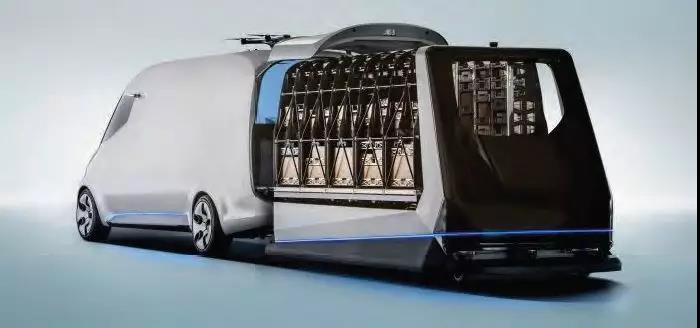Emerging technologies will play an important role in shaping future warehouses and supporting faster delivery
1) Drone
Leading companies such as Amazon and DHL are actively exploring the potential of drones and applying for drones to use patents in logistics. Amazon has patented an airship that can launch drones over large cities. At the same time, many people see the problem of thousands of drones flying over a city. These include traffic congestion, noise and sky occlusion. From an energy perspective, flight is the least efficient means of transportation.
By 2030, drones should play a role in the supply chain, although legislation may delay the use of drones. Perhaps the biggest potential is in non-urban areas where drones will satisfy consumers with the same high speed, ie 2 hours of delivery, which is possible in cities.
In addition, large drones may play a role in connecting cities and even long-haul cargo flights. In cities, drones can play a role in ultra-high speed or short-distance delivery. The proportion of packages that drones will carry in 2030 is still uncertain, but any future distribution solution should be designed to interact with drones.
2) 3D printing
3D printing will dramatically change the way many products enter the market. The most common 3D printing application today is small plastic parts. This is still a slow and expensive process, and as the technology matures, it should become cheaper and faster. In addition, more advanced machines that can print complex parts of multiple materials such as printed metal will appear. There are even companies that create machines that make 3D print food. By 2030, we may see three levels of using 3D printing:
1 Some consumers will have cheap, easy-to-use 3D printers that allow them to print small plastic parts based on licensed 3D models purchased online. This will apply to replacement parts for household appliances, plastic cases for mobile phones or children's toys.
2 For consumers who don't know technology, or larger, more complex parts, there will be “print shops” in the city. Consumers can send their digital designs to print, or order products online and print them on demand. Ideally, these print shops will be integrated into the city's distribution center.
3 Complex industrial applications using a variety of materials, including metals, will be supported by complex 3D printers in manufacturing or service centers.
3) Self-driving vehicle
The self-guided vehicle (AGV) has been in use in the warehouse for 30 years. In the next 10 years, the use of AGV in the warehouse will grow exponentially. There are several drivers behind this trend.
First, there is an increasing demand for warehousing flexibility. Changes in processes, product ranges, or distribution channels all affect warehouse requirements. Traditional bolt-on automated conveyor systems cannot accommodate these changes. AGV provides the flexibility needed.
Another driver is the simultaneous reduction in cost and performance of AGVs as core components increasingly support consumer products such as robotic vacuum cleaners and automatic lawn mowers. The economies of scale of consumer goods are larger than warehouse technology and can reduce the cost of basic technologies such as sensors and navigation systems used by AGV. Technologies that support autonomous vehicles will have similar effects.
While early AGVs still relied on fixed infrastructure (such as reflectors, floor markers or labels), the technology now allows AGVs to navigate with onboard radar and camera systems. Intelligent software and self-learning capabilities can interpret images and indicate where the vehicle is going. This allows the system to be plug and play, making it easy to deploy and flexible.
Replacing large conveyor systems with flexible AGVs may require hundreds or thousands of small AGVs to operate together. This was not possible in the past, but today, of course, in 2030, point-to-point communication, faster wireless networks, and cloud-based processing capabilities combine to achieve coordinated operation. As technology advances, advances in sensors and electronics will enable AGVs to move faster, even when interacting with people.

4) Mobile robot
In this case, the mobile robot is a robot placed on top of an AGV. This allows the robot to drive through the warehouse to the location where the product is stored and retrieve the goods. To work effectively, these robots require powerful navigation, vision systems, and versatile grippers. A certain amount of artificial intelligence is also required to handle almost all categories of products, shelf configurations, and product placement. All of these support technologies are rapidly evolving.
5) IoT connection
As more sensors are installed in the machine and process, there is an opportunity to connect the machine group or the entire facility to the IoT network, providing visibility into product movement and enabling functional maintenance such as forecasting. Industrial IoT networks will soon become an important part of efficient warehouse management because they provide the connections and data that the smart warehouse relies on.
6) Big data
Big data initiatives have shaped everything from marketing to forecasting. They will also drive key advances in logistics, such as the predictive transportation model discussed earlier, and enable machine learning, as the integration of real-time and historical data enables machines to continuously improve their operational actions based on past conditions.
Reprinted from the network


